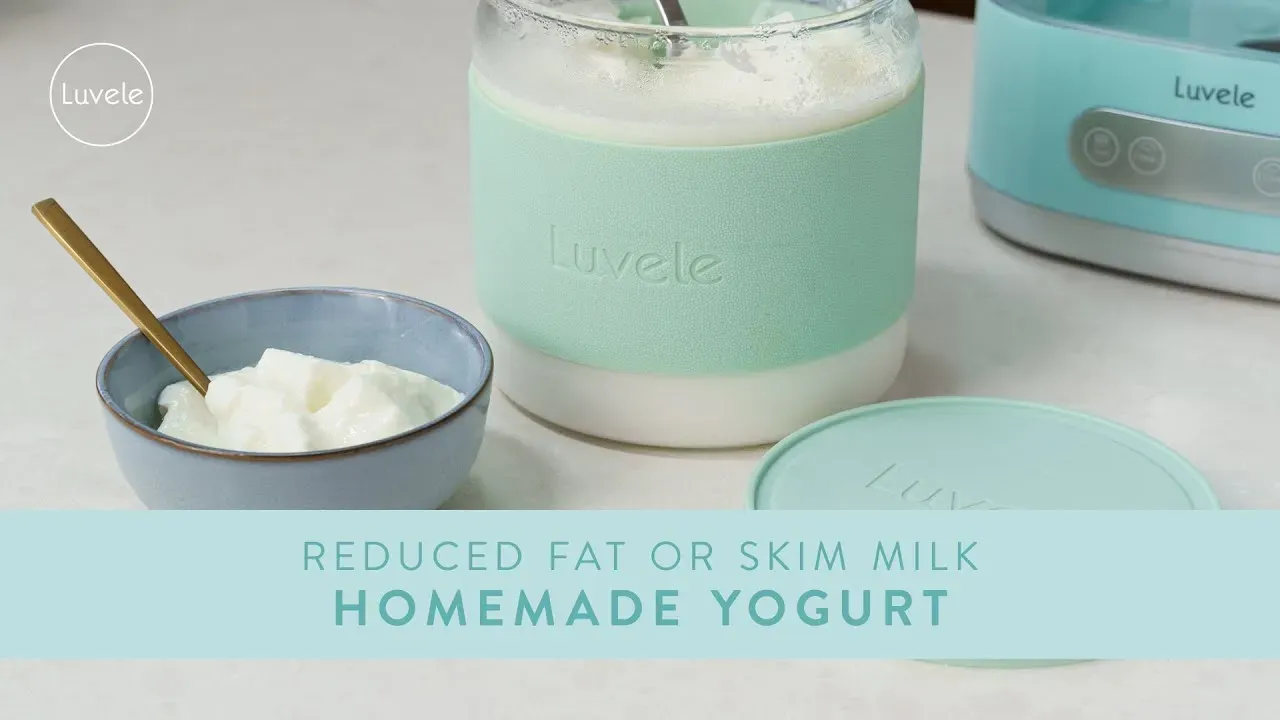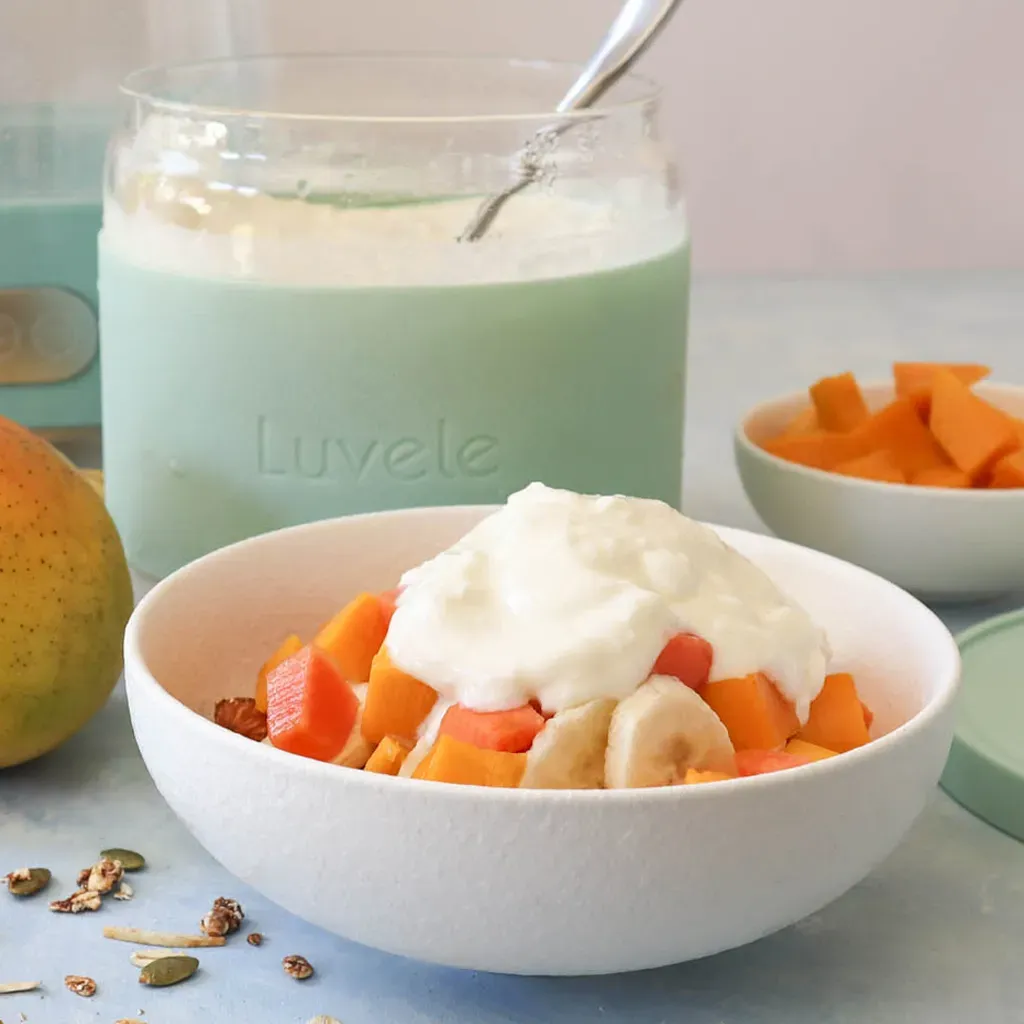Table of Contents
So, you're standing in the dairy aisle, eyeing that carton of low-fat milk, and a thought pops into your head: can you make yogurt with low fat milk? It seems simple enough, right? Milk, starter, time. But if you’ve ever tried it and ended up with something closer to thin milk soup than creamy yogurt, you know it's not always a straight shot to success. The idea of a guilt-free, homemade treat is appealing, sure, but the reality of using milk with less fat can present a few... texture challenges.
Can You Make Yogurt with Low Fat Milk? The Short Answer

Can You Make Yogurt with Low Fat Milk? The Short Answer
So, can you make yogurt with low fat milk? The short answer is yes, absolutely. You technically *can* turn that carton of 1% or 2% milk into yogurt. The bacteria don't really care how much fat is swimming around in there; they'll still go to town on the lactose and acidify the milk. However, and this is a big however, don't expect the same thick, creamy texture you get from whole milk or Greek yogurt. Making yogurt with low fat milk often results in a thinner, sometimes even watery, product. It's edible, it's probiotic-rich, but it might not hold a spoon upright. Think more drinkable yogurt than the stuff you scoop.
Why Making Yogurt with Low Fat Milk Can Be Tricky

Why Making Yogurt with Low Fat Milk Can Be Tricky
so while you *can* make yogurt with low fat milk, the reason it often turns out thin boils down to science, or rather, the lack of fat. Fat molecules are like tiny building blocks in milk. When the milk is heated and then cooled, and the bacteria start doing their work, these fat molecules help create a thicker, more stable structure. They essentially get tangled up with the protein chains, giving yogurt that desirable creamy body. When you significantly reduce the fat content, you remove a lot of those structural components. The protein still coagulates, but without the fat to support it, the network is weaker and holds less water, leading to a thinner, sometimes almost gel-like or watery consistency. It's the difference between building a wall with lots of mortar and bricks versus trying to stack bricks with minimal mortar.
Tips for Making Yogurt with Low Fat Milk That Works

Tips for Making Yogurt with Low Fat Milk That Works
Alright, so the challenge is laid out: making yogurt with low fat milk often results in a runny mess. But before you toss that carton and surrender to the full-fat side, know there are legitimate strategies to tackle this. Think of it less like fighting gravity and more like giving your thin milk a little structural support. The key here is to boost the protein content or alter the milk's structure before the fermentation even begins. This isn't some kitchen magic trick; it's about understanding what makes yogurt thick and then compensating for the missing fat. We're talking about adding extra milk solids or giving the existing proteins a head start.
Getting a Thicker Yogurt When Using Low Fat Milk

Getting a Thicker Yogurt When Using Low Fat Milk
Boost the Protein with Dry Milk Powder
so how do you fight that thinness when you insist on using low-fat milk? One of the oldest tricks in the book, and frankly, one of the most effective, is adding dry milk powder. Think of it as giving your milk a protein supplement. You're increasing the overall milk solids without adding significant fat. This extra protein provides more structure for the yogurt culture to work with, resulting in a firmer set. You typically whisk it into the cold milk before heating. Don't just eyeball it; aim for about 1/4 cup to 1/2 cup of dry milk powder per quart of liquid milk. Whisk it thoroughly to avoid clumps – nobody wants a lumpy yogurt surprise.
Thicken it Up with Gelatin or Starch
Another path to a thicker yogurt, even when you make yogurt with low fat milk, involves introducing a different kind of thickener. Gelatin is a classic choice. You dissolve a small amount (like a teaspoon per quart) in a bit of cold water, let it bloom, and then stir it into the milk while it's heating up, before it reaches its final temperature. It provides a stable, gel-like structure as the yogurt cools. If you prefer to avoid animal products, starches like cornstarch or tapioca starch can also work. You'd make a slurry with a little cold milk and whisk it into the main batch while heating, simmering briefly to activate the starch's thickening power. This method can sometimes give a slightly different texture than milk-based thickening, maybe a touch more 'slippery' or pudding-like, but it definitely adds body.
- Add 1/4 to 1/2 cup dry milk powder per quart of milk.
- Whisk dry milk powder into cold milk before heating.
- Dissolve 1 tsp gelatin in cold water, add to warm milk (before inoculation).
- Use 1-2 tbsp cornstarch or tapioca starch per quart, make a slurry, add to heating milk and simmer briefly.
- Strain the finished yogurt (more on this later).
Can You Make Yogurt with Low Fat Milk and Still Get Great Taste?

Can You Make Yogurt with Low Fat Milk and Still Get Great Taste?
Does Low Fat Mean Low Flavor?
so you’ve tackled the texture issue when asking can you make yogurt with low fat milk. But what about the taste? Does ditching the fat mean ditching the flavor too? In short, yes, it often does. Fat carries flavor compounds, plain and simple. Think about the difference between a rich, full-fat cheese and a fat-free version – the depth and complexity often diminish significantly. Low-fat milk yogurt can sometimes taste a bit... flat. It might have that tangy yogurt character, but it lacks the creamy mouthfeel and subtle richness that whole milk provides. It's like listening to a song in mono when you're used to stereo. It's the same tune, but part of the experience is missing.
Punching Up the Taste After Fermentation
Just because the base yogurt from low-fat milk might be less exciting on its own doesn't mean you're stuck with blandness. This is where you get to play. The real magic for flavor with low-fat yogurt often happens *after* it's cultured and chilled. Forget eating it plain. Think of it as a canvas. Fresh fruit, a drizzle of honey or maple syrup, a sprinkle of granola, chopped nuts, or even a swirl of jam can transform it entirely. A little vanilla extract stirred in can also make a surprising difference, adding perceived sweetness and depth without sugar. The tang of the yogurt pairs beautifully with actual flavors you add, masking any thinness in taste from the low fat content.
Culture Quality and Fermentation Time Matter
Beyond what you add to it, the flavor of your low-fat yogurt still hinges on the quality of your starter culture and how long you let it ferment. A good, active culture is crucial for developing that clean, pleasant tang. A weak or old culture can result in off-flavors or just a lack of vibrancy. Also, controlling the fermentation time lets you adjust the tartness. A shorter time yields a milder yogurt, while a longer fermentation increases the acidity and tang. With low-fat milk, where the inherent richness isn't there to balance intense tang, finding your preferred fermentation sweet spot is key. Don't just set a timer and walk away; taste it periodically after about 6-8 hours to see how the flavor is developing. This control is one of the big perks of making it yourself.
Flavor Enhancer | How it Helps |
|---|---|
Fresh Berries | Adds natural sweetness and acidity. |
Honey or Maple Syrup | Provides sweetness and complex notes. |
Vanilla Extract | Adds warmth and perceived richness. |
Granola/Nuts | Texture and nutty flavor contrast. |
Making Low Fat Yogurt: The Final Word
So, can you make yogurt with low fat milk? Absolutely. Will it be the thick, creamy dream you get from whole milk without some extra effort? Probably not. The key takeaway is that while it's achievable, it requires understanding the limitations and applying specific techniques – like adding milk powder or using a longer fermentation time – to compensate for the lower fat content. It’s not about magic; it’s about managing expectations and using the right tricks to get a decent texture and flavor from your low-fat milk. Give it a shot, experiment with the tips, and see what works best for you.
